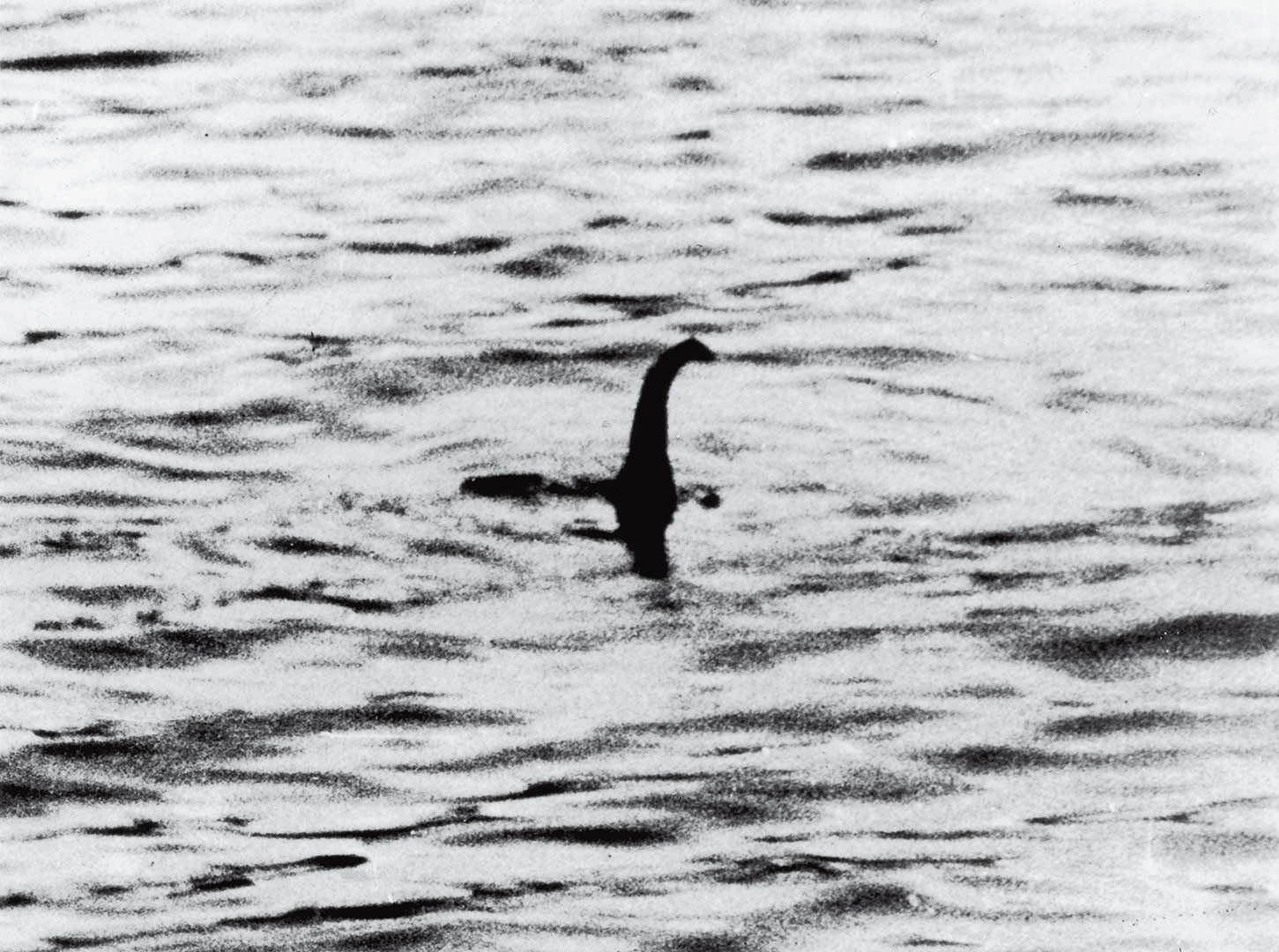Cryptozoology is a common fascination – unexplained creature sightings have been a part of human history for as long as we’ve been recording our history. While Nessie may be the most well-known of lake monsters, she’s not the only one or even the oldest of them! Below you will find a few lake-dwelling cryptids and their histories.
Imagine standing at the edge of a large, deep body of water. The wind blowing around you, listening to the crickets chirping and bees humming. You’re gazing out at the expanse of water before you, lost in thought about all of the things that went wrong that day…musing about what could have been, what you’d have done differently, or what you’d say if you’d been given half the chance to just think it through first. The ripples of the surface of the water pulsing away from you with the wind, then back towards you. It takes your brain just a moment to click into gear, recognizing that if the wind is blowing away from you, the ripples shouldn’t be coming toward you. Your eyes scan the water, and it’s at that moment that something breaches the surface. Stretching up and up, a small black eye at the end of an impossibly long neck, it blinks as if in acknowledgement, then slowly sinks back below the waves. Did your eyes deceive you?
The Loch Ness Monster aka “Nessie”, Loch Ness, Scotland
The Loch Ness Monster is likely the most well-known of lake monsters, with her home in Loch Ness, Scotland. She boasts more than 1,000 eye witness accounts, each describing her as a long and thin aquatic creature that is green or black in color and has a snake-like head. Overwhelmingly, the reports list her as shy, which might explain why we can neither confirm nor deny her existence to this day.
Nessie’s first appearance in the media was May 2nd, 1933. A local couple reported seeing a very large animal breaching the surface of the loch. Their sighting occurred in April of 1933, and another couple later reported sighting the creature on land. These sightings led to a media frenzy, which resulted in a reward being offered for capture of the monster affectionately dubbed Nessie: 20,000 pounds sterling (that’s $26,158.80 in US Dollars, for reference!)
Since those early sightings, many expeditions have been launched to try to conclusively prove or deny the existence of the famous creature. Each expedition returned inconclusive findings, showing evidence of something large moving in the depths of the loch, but no official conclusions as to what that something is. Despite further evidence (or lack thereof), enthusiasm for Nessie has remained strong. Even in the face of early photographs being debunked (famously, a 1934 photograph proved to be a hoax), people remain convinced that Nessie exists in the Loch to this day.

If you want to try your luck at meeting Nessie, you can visit Loch Ness in Scotland and even take a Nessie tour. If you don’t see the cryptid herself, the scenery is breathtaking and you will want to have a camera handy to capture the beauty of the loch. You might even catch a glimpse of something you missed when you look at the photos later…
Champ, Lake Champlain, Canada and United States
Lake Champlain is a 125-mile long body of water that extends from New York and Vermont into Quebec, Canada. Home of the lake monster known as Champ, or Champy, tourists are drawn to Burlingon, Vermont and Plattsburgh, New York each year in hope of sighting the elusive creature reputed to dwell within the depths of the lake.
Champ’s recorded history begins in the 18th century, where the Abenaki and Iriquois both have legends and stories of a serpent-like creature that lived in the lake. When French explorers ventured into the region, the local people warned the explorers about the creature, and advised them not to disturb the waters of the lake.
In 1819, a sighting by a Captain Crum described the creature as 187 feet long, with a head similar to that of a seahorse, and rising approximately 15 feet out of the water. While this is the most detailed description of the creature, it is more commonly described as 25-30 feet long, though many of the other details are similar.
In 1873, many Champ sightings were recorded, including a railroad crew, a county sheriff, and the occupants of the steamship W.B. Eddy. The steamship reportedly ran into the creature, nearly capsizing. It was this year that P.T. Barnum offered a $50,000 reward for the hide of the creature, to add to the World’s Fair Show. One was never produced, leaving us to wonder if Champ still swims the waters to this day.
Throughout the years, more sightings of Champ have occurred, many of them being from tourist boats and having multiple accounts of the same encounter. With more than 300 sightings to his credit, Champ remains elusive to photographers and videographers, with fewer physically documented accounts than many of his popular cryptid peers. The most famous Champ photo is one taken in 1977 by Sandra Mansi. The photo was donated by Mansi to the ECHO center in 2012, where it is displayed as part of their ChampFEST celebration.

In 2003, the Discovery Channel did a documentary on the search for Champ, and provides what is possibly the most compelling evidence for the existence of something larger in the water of Lake Champlain: in underwater recordings, a series of clicks and chirps can be heard that can’t be explained away by the usual freshwater suspects. Proof that Champ exists, or a trick of the equipment?
If you’re looking to spot Champ, Port Henry is a good place to start. They celebrate Champ each August with an Annual Champ Day celebration. Even if the dream of spotting Champ doesn’t become a reality, there are plenty of sites to visit that celebrate the local cryptid celebrity.
Lariosauro, Lake Como, Italy
Unlike the other cryptids on this list, who are most often described as having plesiosaurus qualities, Lariosauro is more frequently described as crocodile-like, and the presence of fossils of similar creatures found in the area in 1830 lend an additional credibility to the sightings of this particular lake monster.
Como Lake is approximately 1200 feet deep at its deepest location, making it easy for the legend of Lariosauro to be born and to continue to grow, as at these depths, it is easy to imagine that even a large creature could roam undetected and undisturbed.
The first documented sighting of the cryptid was November 18th, 1946. Said to be spotted on the north shore of the lake by two hunters, and described as a reddish, scaled creature approximately 11 meters in length, future sightings would go on to add details such as webbed feet and a rounded snout to the legend that would become Lariosauro.
Affectionately referred to as “Larry” by locals, the legend of Lariosauro is a quiet one, but still persists into present day. He even has a book, published in 2000: Il Lariosauro by Giovanni Galli. Though a small folk tale in comparison to Nessie and Champ, it offers an opportunity for adventure to those who travel to Lake Como. Could Larry really exists in the deepest parts of the lake? Is he but a long-lived ancestor of the once great dinosaurs that lived in the area?
There are many more cryptids rumored to be found in lakes and other bodies of water around the world. Didn’t see your favorite here? Tell us about it in the comments below!
Sources:
Nessie:
- https://www.visitinvernesslochness.com/explore-the-scottish-highlands/loch-ness-myths-and-legends/
- https://www.visitscotland.com/about/uniquely-scottish/loch-ness-monster/
- https://en.wikipedia.org/wiki/Loch_Ness
- http://100photos.time.com/photos/loch-ness-monster
Champ:
- https://www.lakechamplainregion.com/heritage/champ
- https://www.phantomsandmonsters.com/2014/02/1977-mansi-champ-photo-displayed-for.html
- https://www.genesispark.com/exhibits/evidence/cryptozoological/plesiosaurs/champ/
- https://roadtrippers.com/magazine/lake-champlain-champ/
Lauriosauro:
- https://wevillas.com/news/como-lake-villas-monster-the-legend-of-lariosauro
- https://www.italymagazine.com/news/italys-lake-como-has-monster-called-lariosauro
- https://www.aroundturin.com/lake-como-bellagio/
- https://www.italiani.it/en/lariosaurus-a-monster-on-the-shores-of-lake-como/
- https://cryptidz.fandom.com/wiki/Lariosauro




Leave A Comment
You must be logged in to post a comment.